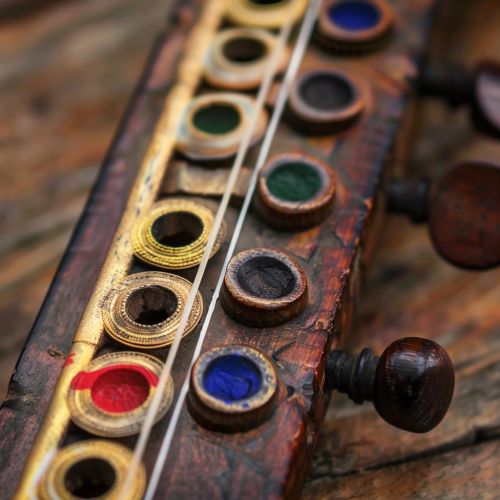Swaras
Overview
Swaras or Swaras are the fundamental building blocks of Indian classical music. They are the seven notes that give music its melodic structure and foundation. The term 'Swaras' is derived from the Sanskrit word 'Svāra', which means a note or sound. These seven notes are Sa (Shadja), Re (Rishabh), Ga (Gandhar), Ma (Madhyam), Pa (Pancham), Dha (Dhaivat), and Ni (Nishad). Each of these notes has a specific frequency and a distinct place in the octave.


Origin and History
The concept of Swaras dates back to the ancient Vedic times, where they were used in the chanting of the Vedas. The earliest mention of the Swaras is found in the Rigveda, one of the oldest texts in the world. The Rigveda mentions a system of seven notes, which is considered the precursor to the modern system of Swaras.
The Seven Swaras
Each of the seven Swaras has a unique identity and role in the creation of a melody. They are:
Sa (Shadja)
Sa is the first and most important Swara. It is the base note from which all other notes are derived. It is also the note that is constant in all Ragas and does not change.
Re (Rishabh)
Re is the second Swara and is considered the 'son' of Sa. It has two forms - Shuddha Re (Natural) and Komal Re (Flat).
Ga (Gandhar)
Ga is the third Swara and is considered the 'wife' of Re. It also has two forms - Shuddha Ga (Natural) and Komal Ga (Flat).
Ma (Madhyam)
Ma is the fourth Swara and is considered the 'mother' of Sa. It has two forms - Shuddha Ma (Natural) and Tivra Ma (Sharp).
Pa (Pancham)
Pa is the fifth Swara and is considered the 'father' of Sa. It is the only Swara that does not have any other form.
Dha (Dhaivat)
Dha is the sixth Swara and is considered the 'son' of Pa. It has two forms - Shuddha Dha (Natural) and Komal Dha (Flat).
Ni (Nishad)
Ni is the seventh and final Swara. It is considered the 'wife' of Dha. It also has two forms - Shuddha Ni (Natural) and Komal Ni (Flat).
Swaras and Ragas
Swaras form the basis of all Ragas in Indian classical music. A Raga is a melodic framework that uses a set of Swaras in a specific sequence. The arrangement and sequence of Swaras in a Raga give it its unique identity and mood.
Swaras in Performance
In a performance, the musician uses the Swaras to create a melodic structure. The musician can vary the pitch, duration, and emphasis of each Swara to create different melodies. The use of Swaras in performance is a complex process that requires years of training and practice.
Conclusion
Swaras are the foundation of Indian classical music. They provide the melodic structure that allows musicians to create a wide range of melodies and moods. Understanding the Swaras and their role in music is essential for anyone studying or appreciating Indian classical music.
